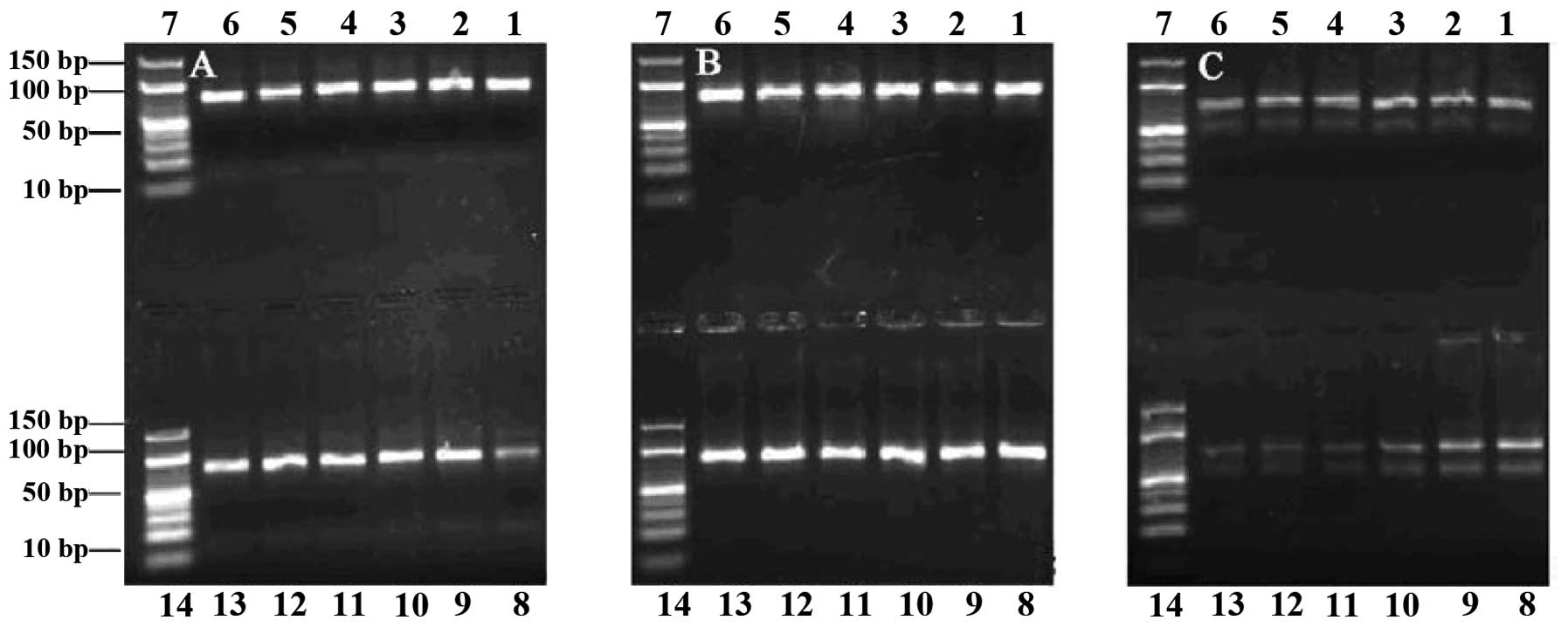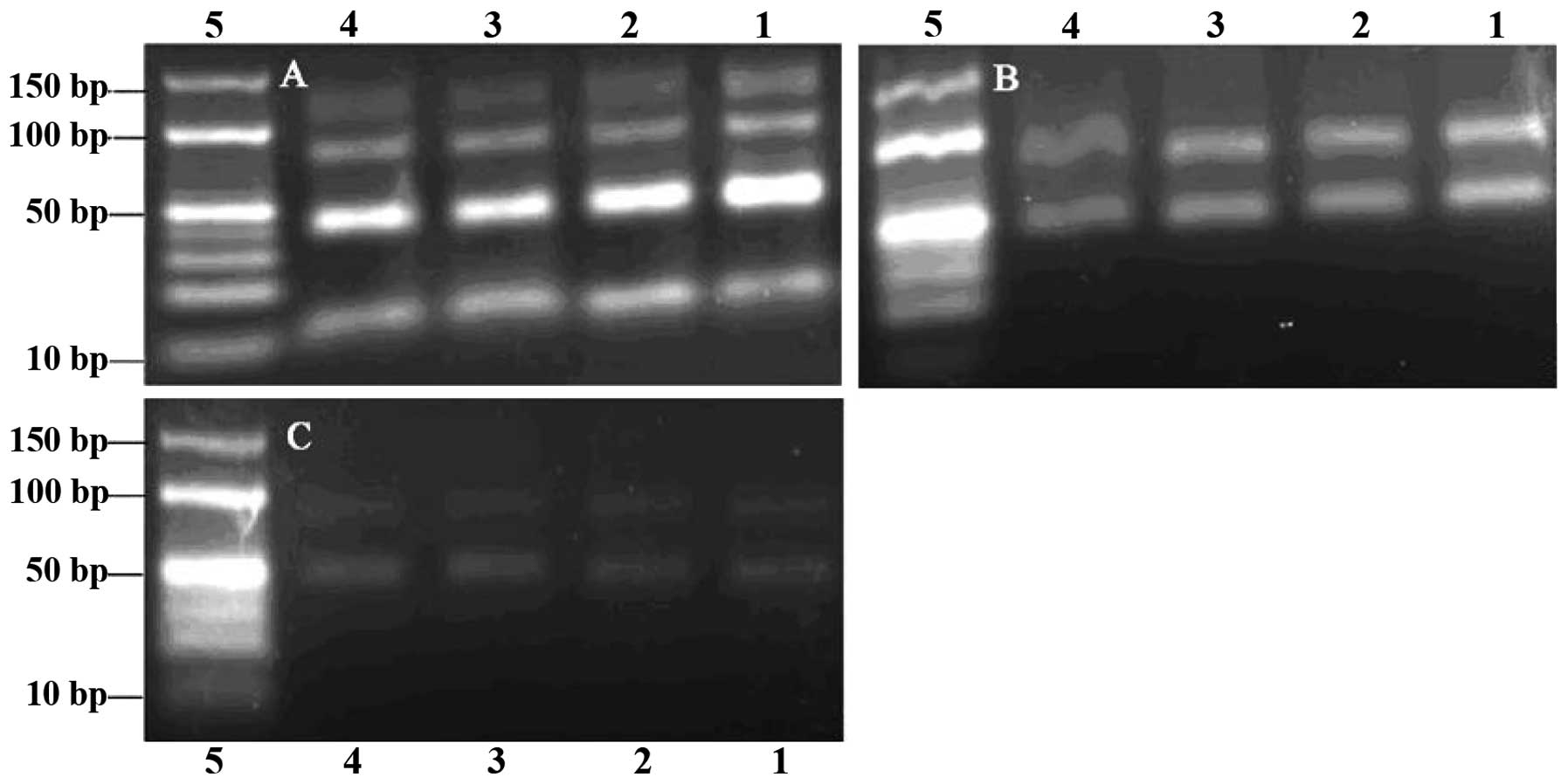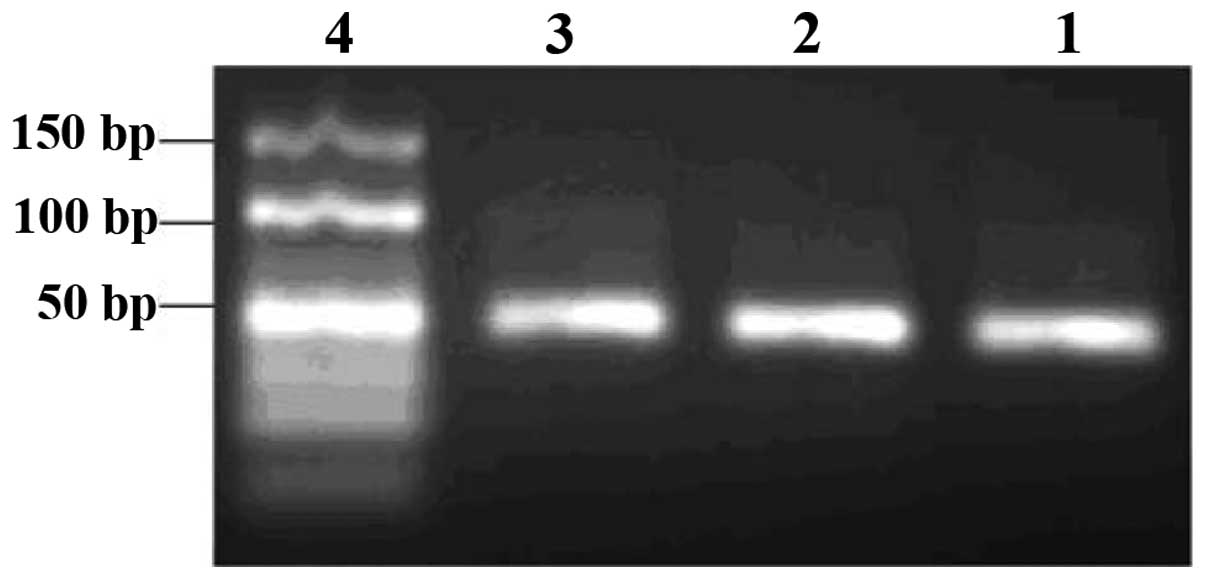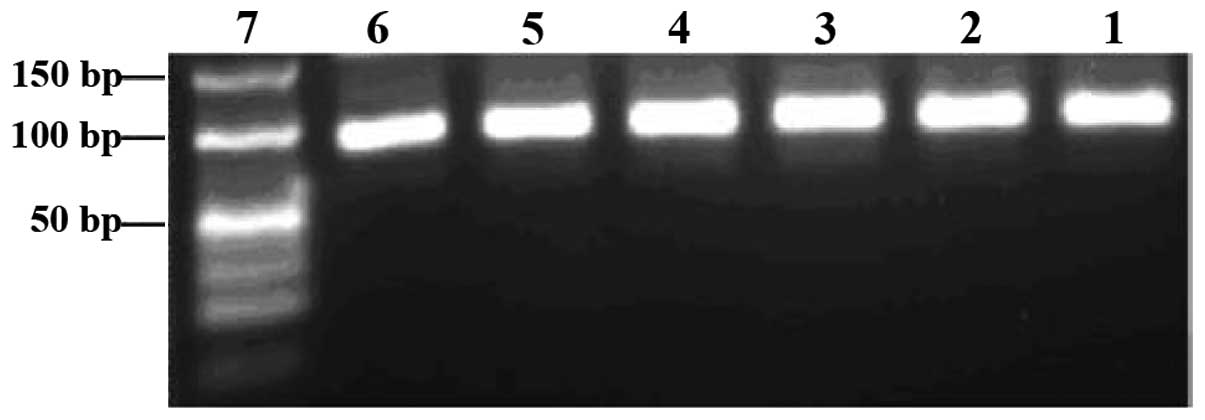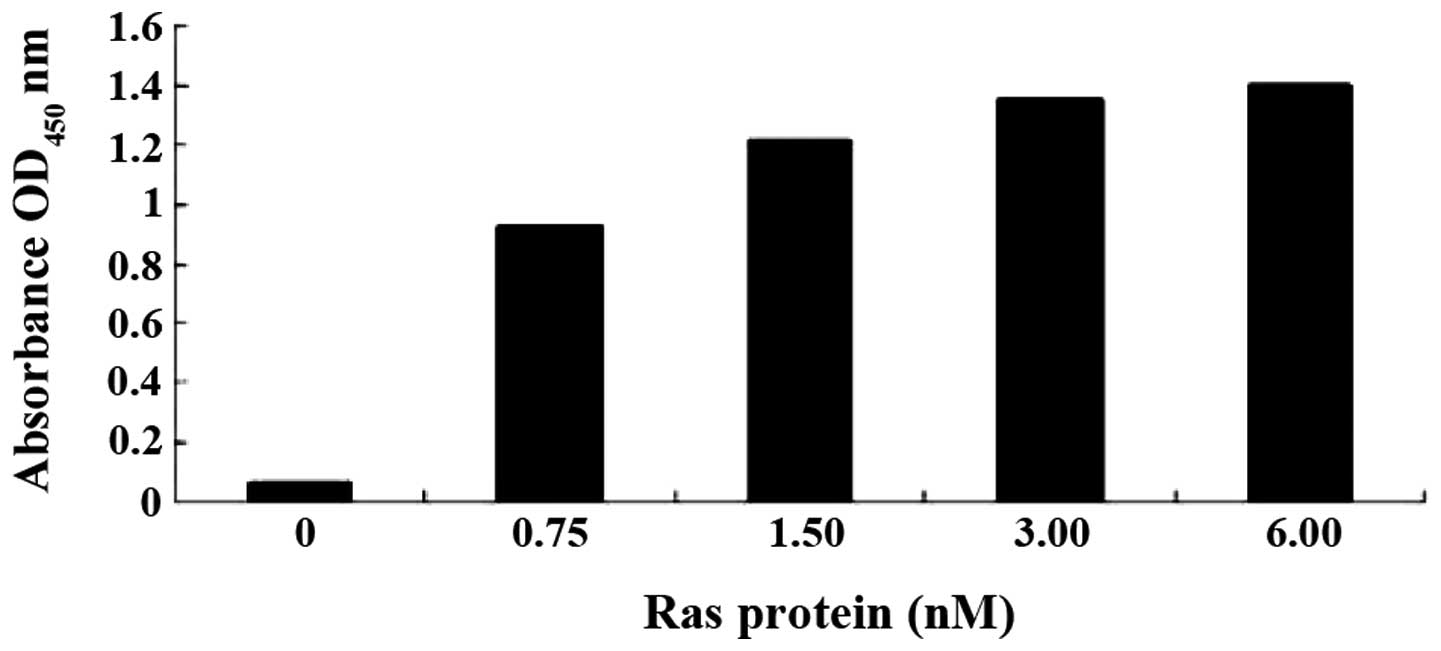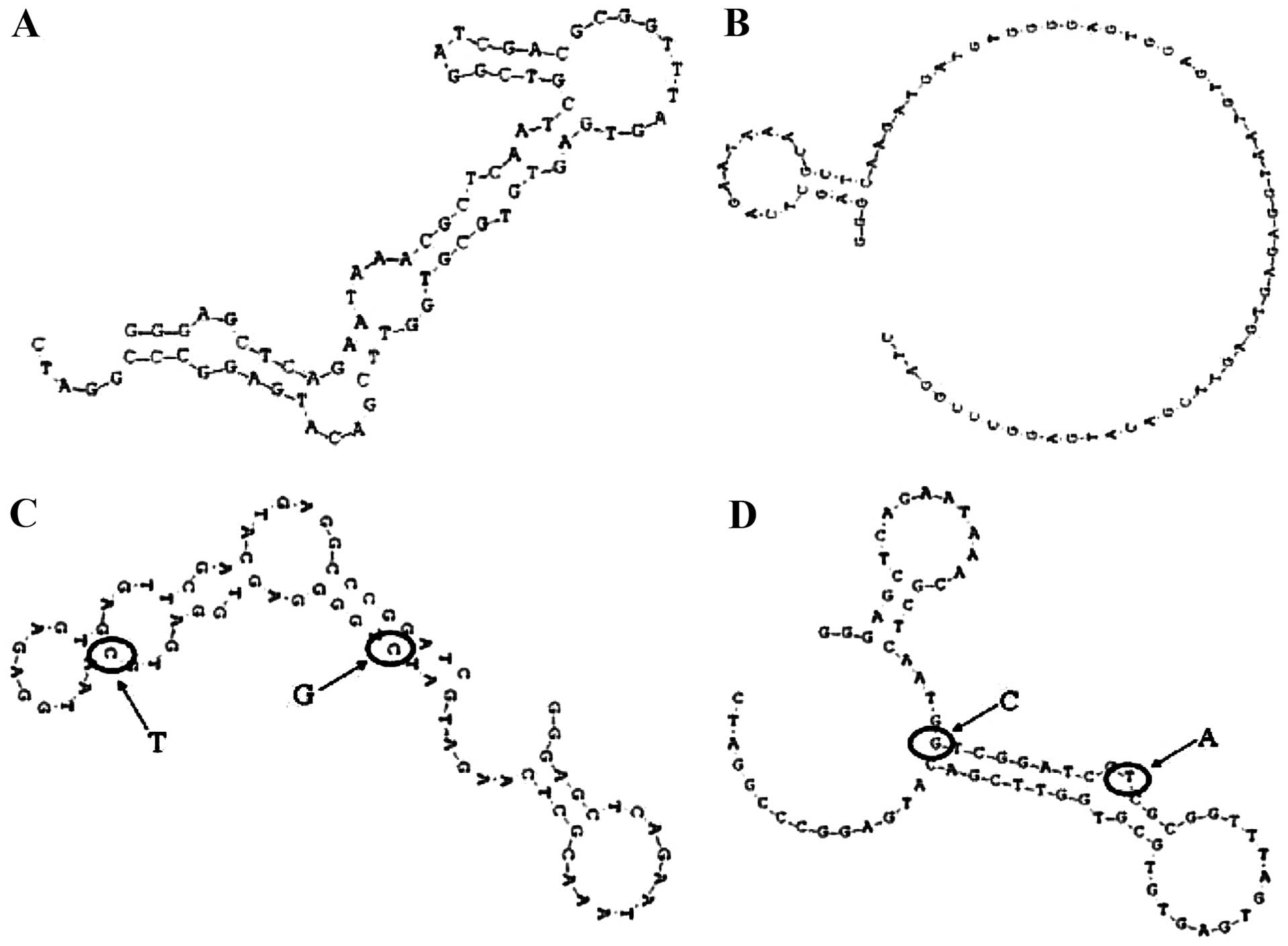In vitro selection and identification of ssDNA aptamers recognizing the Ras protein
- Authors:
- Published online on: June 16, 2014 https://doi.org/10.3892/mmr.2014.2337
- Pages: 1481-1488
Metrics: Total
Views: 0 (Spandidos Publications: | PMC Statistics: )
Total PDF Downloads: 0 (Spandidos Publications: | PMC Statistics: )
Abstract
The aim of this study was to develop high-affinity single-stranded DNA (ssDNA) aptamers that can selectively recognize the protein Ras and can be used as preventive and therapeutic agents for restenosis occurring after coronary surgery or angioplasty. For this purpose, we used the systematic evolution of ligands by exponential enrichment (SELEX) technique, also known as in vitro selection. Using this technique, ssDNA aptamers recognizing the Ras protein were obtained from a synthesized random ssDNA library in vitro. The binding rate and affinity of each aptamer pool, isolated in successive rounds of selection, were measured using ELISA, and the finally selected aptamer pool was cloned and sequenced. The binding affinities of each aptamer in this pool were measured. Their primary and secondary structures were analyzed using the DNAMAN 5.29 software, and the relationship between these structures and corresponding binding affinities was analyzed. The rate of aptamer pool binding to the Ras protein gradually increased from 2.4 to 34.5% along the selection process. Optical density (OD) and equilibrium dissociation constant (Kd) measurements showed that OD gradually increased from 0.220 to 1.080 and Kd decreased from 51.5 to 18.3 nM. The 11th pool of aptamers was selected based on these analyses, and cloning and sequencing of individual aptamers was performed. Secondary structure analysis revealed different conformations, but of a single type: stem‑loop. The aptamer Ra1 showed the highest affinity, with a measured OD of 1.213 and an estimated Kd of 15.3 nM. The binding affinity of the aptamer Ra1 to Ras was dose-dependent. In conclusion, high‑affinity ssDNA aptamers recognizing the Ras protein have been successfully selected. These aptamers may serve in the future as preventive and/or therapeutic agents for restenosis occurring after coronary surgery or angioplasty.



